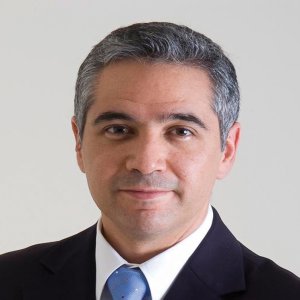Competitive Aftermarket Drives Creativity

STORY INLINE POST
Q: What role is ARIDRA playing in the development of the aftermarket sector, and what are the main trends you have identified?
A: Having been founded almost 70 years ago, ARIDRA is the oldest association in the automotive industry. One of its distinguishing factors is that it has a wide variety of members across distributors, retailers, manufacturers, importers, and agencies. This gives us a good understanding of what is happening in the market, as well as the opportunities and challenges our members face. We then share the information with our members so they can also plan ahead. ARIDRA’s focus is mainly on the aftermarket since companies in the OE segment are part of INA. Overall, the aftermarket sector is evolving drastically and becoming more aggressive. 2013- 2014 has been a positive period for the aftermarket sector, although it did not always proceed as expected. There was slight top line growth but some erosion in profit due to many companies’ investment in sales processes, including marketing, advertisement, and general administrative areas. The aftermarket is also becoming more demanding, as companies need better tools, technology, inventory, quality, and added value services. An important challenge for all the players in the aftermarket sector is to be efficient in cataloguing, branding, and product development.
Q: What have been the most recent sources of profit erosion?
A: Many companies had very aggressive business plans for 2013, and were expecting double-digit growth but this did not happen due to two factors. The first was a lack of cash caused by difficulties in the collection of payments from customers, which in turn created mounting pressure to sell even more products that the companies had to buy from the manufacturers. A tight, competitive environment was created throughout the entire sector. Since sales were at an unexpected level, companies began to lose ground, and as a result, they had to reduce prices or give discounts. Surprisingly, this had nothing to do with competitiveness, as the market itself had gone soft and resulted in a slim growth of 2%. There are only two ways of achieving double-digit growth: taking advantage of market growth or grabbing market share from other players. The best way to grab market share is to reduce prices and offer discounts. Faced with this movement, some companies opted for another growth strategy which did not involve sacrificing their margins. Their strategy entailed warehouse management, logistics, and efficiency. Inventory reduction has become a continuous trend, and some companies are relying on 24-hour turnaround business from the manufacturers to offer an express service themselves. Many retail shops now have no inventory. When a customer arrives, the retailer only has to pick up the phone and ask for the components. Some businesses can ship in as little as 20 minutes.
Vehicle owners are also becoming more demanding; they are looking for better products at a lower price. As a result of the rising purchasing power in Mexico, we are seeing more products in the entry and mid-price range levels. While most companies invest in their premium brands, they are now selling less premium units and experiencing sales increases at the mid and entry levels. The typical profile of a company is a manufacturer that distributes its own products and has its own brand. To change the consumer’s mentality, it is important to reinforce the brand image, and offer workshops and training. The consumer market must be re-educated or we will begin to see more products in white boxes where the difference will be defined only by the price.
Q: How does ARIDRA help Mexican-owned companies become more competitive?
A: A few Mexican-owned companies are members of ARIDRA, like DAI and Grupo Gonher. One of the peculiarities of these Mexican companies is that they are focused on one particular component and segment of the vehicle. The challenge for the automotive industry is to develop local Tier 2 and 3 companies. When OE manufacturers cannot obtain their products here, they search outside of Mexico, but Mexican companies can fill this gap in the market. This will be the next step for the automotive industry and should be a priority on the government’s agenda. Mexican suppliers have to realize that the aftermarket sector offers opportunities them. One of the advantages that SMEs gain from being members of ARIDRA is that they can gain access to information. Networking is also important since it gives companies the chance to get together, update each other, and discuss market trends.




















